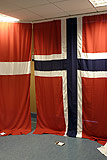
http://www.machinima.com/films.php?id=1632
Arts news, exhibitions, events, biennials and conferences, calls, resources and opportunities, technical information, exhibitions and reviews. London Edition.
1999 - 2001 http://www.acay.com.au/~severn/imp/IMP2/imp2.htm
2002 - 2003 http://www.acay.com.au/~severn/imp/imp.htm
The internet phenomena of 'blogging' was first mentioned on Print Australia on 12th June 2002 in regard to a discussion on Empyre list. Blogs were discussed intermittantly on the list in the period leading up to the announcement of Print Australia's blog.
+++++++++++++++++++






Dashing through the bush,

'The Holly and the Ivy' and 'Silent Night' are two popular Christmas songs. One is a traditional carol from the Middle Ages, while the other was written in the 19th century. Each has a snow-encrusted story to tell. For a sunburnt Christmas, we hear William James' 'Carol of the Birds'.
http://abc.net.au/rn/rhythmdivine/stories/2006/1809717.htm"The images here represent samples of recent experimentations with locally collected clays on paper. Josephine Severn 2003"http://www.acay.com.au/~severn/studio/mud/mud.htm

The Magic Pudding has been a source of wonder and amusement for nearly 90 years: no matter how much the reader gets out of the story, there is, as with the Pudding itself, always something left.
But to its author, artist and writer, Norman Lindsay (1879–1969), the book was a ‘little bundle of piffle’. Written as a distraction from the horrors of World War 1 and his brother’s death on the Somme, he thought it held him back as a serious writer.

The story arose out a professional disagreement Lindsay had with fellow writer, Bertram Stevens, who thought that fairies were the most popular subject for a children’s story. Lindsay believed it was food. The pudding won.

The original artwork is derived from 102 drawings Lindsay made for the book in pencil, ink and watercolour.
The first edition was a limited-edition art book, costing the relatively high sum of £110. Lindsay opposed the cost: ‘I wouldn’t have minded if it had come out as a kids’ book, to be sold at a price that would allow the kid to tear it up with a clear conscience’.













"And it is in the wider world I wish to see women artists play their part. For that to continue to happen, we must tell stories, often the same story, over and over, so that it is not lost or forgotten, so that it retains potency, truth and relevance. "
(Burke quoted in Hylton, 2000, p. 15)

"he paints what he likes to paint, even if it means weathering accusations of misogyny, sexism, ageism, and homophobia"




Jean Kilbourne's pioneering work helped develop and popularize the study of gender representation in advertising. Her award-winning Killing us Softly films have influenced millions of college and high school students across two generations and on an international scale. In this important new film, Kilbourne reviews if and how the image of women in advertising has changed over the last 20 years.
With wit and warmth, Kilbourne uses over 160 ads and TV commercials to critique advertising's image of women. By fostering creative and productive dialogue, she invites viewers to look at familiar images in a new way, that moves and empowers them to take action.
http://mediaed.org/videos/MediaGenderAndDiversity/KillingUsSoftly3
Click here for Study Guide Handouts
* Watch video
http://video.google.com.au/videoplay
==========
http://www.mediaed.org/news/articles/oprah




